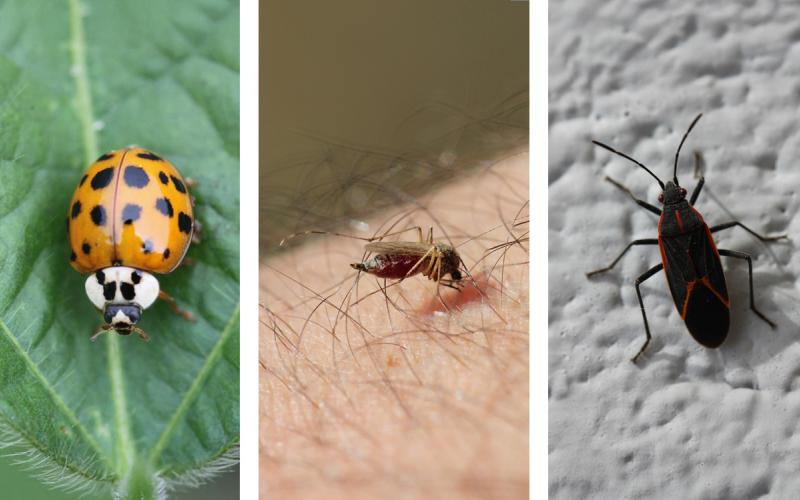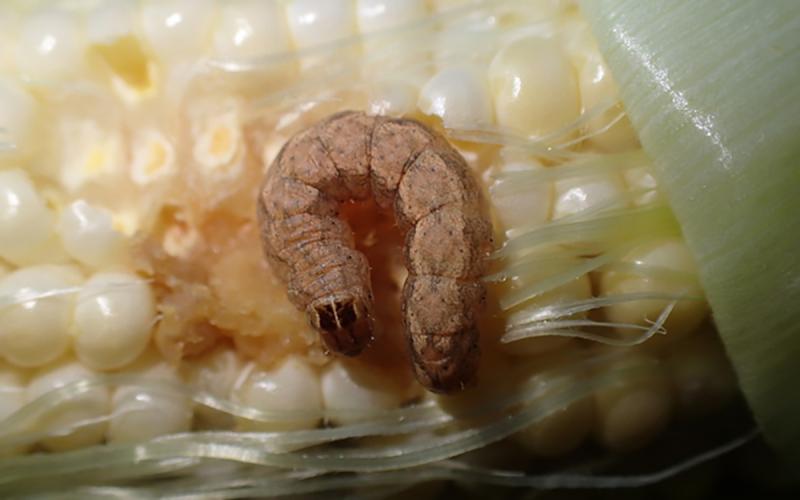Originally Submitted: April 22, 2021
With corn planting underway in South Dakota, it is important to remember that there are some early-season insect pests that can affect stands. In its early vegetative growth stages, corn is susceptible to feeding by the common stalk borer. Although the common stalk borer is considered a minor or occasional pest of corn, it is capable of reducing plant stands where corn is adjacent to grassy or weedy areas. Common stalk borers initially feed on corn leaves. As they grow, they move to the whorl of the plant and bore into the growing point, which can result in dead heart and subsequent plant death.
Predicting Common Stalk Borer Migration Into Corn Fields With Degree Days
The hatching and movement of common stalk borer caterpillars can be estimated by using degree days with a developmental threshold of 41 degrees Fahrenheit. Common stalk borer eggs typically begin to hatch at 575 degree days. The caterpillars finish hatching and begin development on weeds and grasses at 750 degree days. At 1,300 degree days, 10% of the caterpillars will begin moving to corn. At this point, corn should begin to be scouted. At 1,400 degree days, 50% of the caterpillars will or have moved into corn.
As a reminder, the equation for degree days is:
(Maximum Daily Temperature + Minimum Daily Temperature) ÷ 2 - The Developmental Threshold
In South Dakota, most of the state is still between conditions approaching egg hatch and egg hatch occurring. No scouting is necessary for common stalk borer at this time. We will continue to update this information.
| Accumulated Degree Days |
Common Stalk Borer Caterpillar Activity |
Recommendation |
|---|---|---|
| 0-574 | Conditions favorable for egg hatch. | No scouting necessary. |
| 575-749 | Eggs begin to hatch. | No scouting necessary. |
| 750-1299 | Young caterpillars begin boring into grass and weeds. | No scouting necessary. Avoid spraying grass and weeds along field edges. |
| 1300-1399 | 10% of caterpillars begin moving into adjacent corn. | Begin scouting field edges for defoliation. |
| 1400-1700 | 50% of caterpillars moving into adjacent corn. | Continue scouting for defoliation along field edges. Spray if necessary. |
| Location |
Since January 1, 2019 |
Recommendation |
|---|---|---|
| Buffalo |
|
No scouting necessary |
| Newell |
|
No scouting necessary |
| Rapid City |
|
No scouting necessary |
| Hot Springs |
|
No scouting necessary |
| Lemmon |
|
No scouting necessary |
| Faith |
|
No scouting necessary |
| Cottonwood |
|
No scouting necessary |
| Mission |
|
No scouting necessary |
| Selby |
|
No scouting necessary |
| Gettysburg |
|
No scouting necessary |
| Pierre |
|
No scouting necessary |
| Winner |
|
No scouting necessary |
| Aberdeen |
|
No scouting necessary |
| Huron |
|
No scouting necessary |
| Mitchell |
|
No scouting necessary |
| Tyndall |
|
No scouting necessary |
| Sisseton |
|
No scouting necessary |
| Brookings |
|
No scouting necessary |
| Vermillion |
|
No scouting necessary |


